Endpoints remain the most targeted entry point for cyberattacks, accounting for over 68% of breaches. Traditional antivirus alone can no longer shield modern workforces against sophisticated malware, fileless attacks, and zero-day exploits. Advanced Endpoint Protection answers this challenge by blending predictive prevention, real-time detection, and automated response within a unified platform.
In the first 100 words, Advanced Endpoint Protection combines next-generation antivirus, behavioral analysis, machine learning, and threat intelligence to secure endpoints against evolving threats. This guide explores its evolution, core components, benefits, implementation strategies, and actionable best practices to empower security teams and business leaders.
Evolution from Traditional Antivirus to Advanced Endpoint Protection
Signature-based antivirus once formed the frontline defense, but attackers now deploy polymorphic malware and living-off-the-land techniques that evade static signatures. To keep pace, security vendors introduced Endpoint Protection Platforms (EPP) that add heuristic analysis, sandboxing, and reputation services. As threats advanced further, integrating Endpoint Detection and Response (EDR) capabilities within EPP gave rise to Advanced Endpoint Protection, delivering prevention, detection, and response in one solution.
Core Components of Advanced Endpoint Protection
Advanced Endpoint Protection platforms comprise several key modules:
Machine Learning and AI-Driven Detection
Agent-based telemetry feeds into AI engines that learn normal endpoint behavior. Machine learning models then flag anomalies—such as unfamiliar process chains or unusual memory usage—enabling detection of zero-day threats without reliance on signatures.
Behavioral Analysis and Anomaly Detection
Behavioral analytics monitors process execution, file modifications, network connections, and script usage. Anomalies like unusual PowerShell invocations or unauthorized registry changes trigger alerts and response actions.
Device Control and Encryption
Endpoint agents enforce device control policies, blocking unauthorized USB drives or printers. Full disk encryption ensures data protection at rest, mitigating risks if devices are lost or stolen.
Threat Intelligence Integration
Real-time threat feeds of Indicators of Compromise (IoCs) and adversary Tactics, Techniques, and Procedures (TTPs) enrich detection engines, enabling proactive blocking of known malicious domains, IPs, and file hashes.
Centralized Management Console
A unified dashboard provides visibility into endpoint health, security events, policy compliance, and remediation workflows. Administrators can deploy updates, adjust policies, and investigate incidents from a single pane of glass.
Key Features and Benefits
| Feature | Business Benefit |
|---|---|
| Unified Prevention, Detection, Response | Simplify security operations with one agent and console, reducing tool sprawl and licensing costs. |
| Real-Time Threat Blocking | Prevent breaches by blocking malicious actions before execution, lowering incident response time. |
| Automated Remediation | Isolate affected endpoints, rollback malicious changes, and restore systems automatically. |
| Simplified Compliance Reporting | Generate audit-ready reports for GDPR, HIPAA, PCI DSS, and other standards without manual effort. |
| Scalable Architecture | Support thousands of endpoints with minimal performance impact using lightweight agents and cloud APIs. |
Advanced Endpoint Protection vs. Next-Gen Antivirus and EDR
| Aspect | Next-Gen Antivirus | Advanced Endpoint Protection | EDR |
|---|---|---|---|
| Detection Techniques | Signature + basic heuristics | ML/AI, behavioral analysis, threat intel | Behavioral analytics + threat hunting |
| Response Capabilities | Alert only | Automated isolation and remediation | Forensics and manual response |
| Data Retention | Short-term telemetry | Long-term logs for forensics and audits | Long-term telemetry and custom queries |
| Management | Basic console | Unified management with policy automation | Console focused on investigation and hunting |
Many organizations adopt a hybrid approach, selecting Advanced Endpoint Protection to cover prevention and response, then integrating with specialized EDR for deep-dive threat hunting.
Implementation Best Practices
-
Phased Deployment Strategy
Start with high-risk user groups and servers before full-scale rollout to minimize disruption. -
Policy Configuration and Tuning
Establish baseline policies for allowed applications and behaviors. Regularly review and adjust to reduce false positives. -
Integration with SIEM and SOAR
Forward alerts and logs to Security Information and Event Management (SIEM) and orchestrate response playbooks in SOAR platforms. -
Ongoing Monitoring and Threat Hunting
Utilize built-in query tools to search for indicators of attack proactively and refine detection rules based on threat intelligence.
Challenges and How to Overcome Them
-
False Positives Management: Implement risk-based alert scoring and whitelist trusted applications.
-
Resource Consumption: Choose solutions with minimal CPU and memory overhead; schedule scans during off-peak hours.
-
Data Privacy and Storage: Encrypt telemetry at rest and in transit; apply retention policies to comply with regulations.
-
Vendor Evaluation: Assess detection efficacy through independent tests, evaluate support quality, and verify roadmap alignment.
Future Trends in Advanced Endpoint Protection
-
Zero-Trust Integration: Endpoint posture checks become integral to zero-trust networks, enforcing continuous verification.
-
Cloud-Native Endpoint Security: SaaS-based consoles and lightweight agents shift processing to the cloud, reducing local overhead.
-
Automated Threat Orchestration: AI-driven playbooks automatically remediate threats across endpoints, cloud, and network layers.
-
IoT and Mobile Endpoint Expansion: Protection extends beyond PCs—covering IoT devices, mobile endpoints, and edge compute nodes.
Implementing an Advanced Endpoint Protection Strategy
-
Assess Current Endpoint Landscape: Inventory assets, operating systems, and applications.
-
Define Success Metrics: Set KPIs such as mean time to detect (MTTD), mean time to respond (MTTR), and reduction in incident volume.
-
Engage Stakeholders: Align IT, security operations, and executive sponsors on objectives and resource requirements.
-
Continuous Improvement: Review incident reports and threat trends quarterly, refining policies and playbooks accordingly.
Frequently Asked Questions
1. What is the difference between Advanced Endpoint Protection and EDR?
Advanced Endpoint Protection blends prevention (EPP) with response capabilities like automated isolation, while EDR emphasizes detection, investigation, and manual or semi-automated response.
2. How does AI enhance endpoint security?
AI and machine learning models analyze large volumes of telemetry to identify subtle threat patterns and zero-day exploits that traditional methods miss.
3. Can small businesses benefit from Advanced Endpoint Protection?
Yes. Many vendors offer scalable, cost-effective solutions with cloud management consoles tailored for small and mid-sized organizations.
4. What are typical system requirements?
Requirements vary by vendor but generally include Windows, macOS, or Linux endpoints with a lightweight agent and secure connectivity to the management server or cloud.
5. How do I handle false positives?
Tune detection rules, maintain up-to-date whitelists, and leverage risk scoring to prioritize true threats over benign activities.
6. How does Advanced Endpoint Protection integrate with cloud services?
Modern EPP platforms offer SaaS consoles and APIs to manage cloud workloads, apply policies to virtual machines, and ingest cloud logs for unified visibility.
7. What compliance standards are supported?
Advanced Endpoint Protection solutions typically support GDPR, HIPAA, PCI DSS, SOX, and other frameworks by providing audit logs and compliance reporting features.
8. What role does threat intelligence play?
Threat intelligence feeds known IoCs—malicious IPs, domains, and hashes—into detection engines, enabling faster blocking of known threats and proactive defense.
Conclusion
Advanced Endpoint Protection represents the next evolution in endpoint security, unifying prevention, detection, and response into a single platform. By leveraging AI-driven detection, behavioral analytics, device control, and integrated threat intelligence, organizations can thwart sophisticated attacks and reduce incident response times dramatically.
To secure your endpoints effectively, assess your current tools, define clear security objectives, and adopt an advanced endpoint protection solution that aligns with your environment. Start with a pilot deployment, tune policies, and integrate with your security operations to ensure comprehensive, future-proof endpoint security. Take action now to elevate your endpoint defenses and stay ahead of emerging cyber threats.




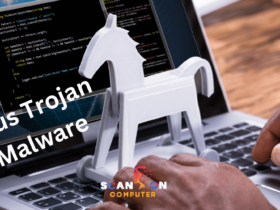


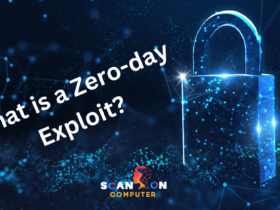
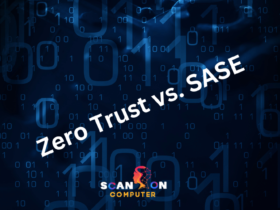
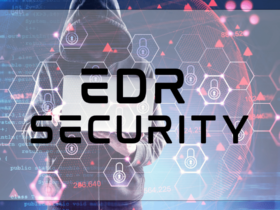


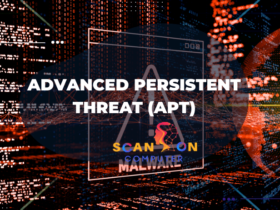
Leave a Reply
View Comments